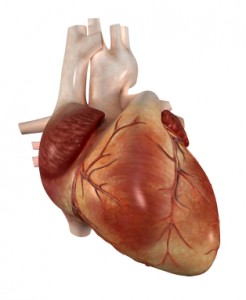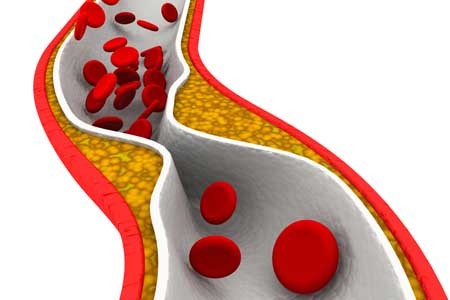Cold Water Immersion Can Have Benefits
From:
Medscape Staff, December 08, 2022
“Bathing in cold water or ice may cut “bad” body fat and reduce the risk of disorders such as diabetes, but other claims of health benefits are less defined, according to researchers from the Arctic University of Norway and the University Hospital of North Norway.
WHAT TO KNOW:
- Immersion in cold water has a major impact on the body. It elevates the heart rate and has positive effects on brown adipose tissue, a type of “good” body fat that is activated by cold and may protect against obesity and cardiovascular disease.
- Exposure to cold water or cold air also appears to increase the production of the protein adiponectin by adipose tissue. Adiponectin plays a key role in protecting against insulin resistance, diabetes, and other diseases.
- Repeated cold-water immersions by inexperienced as well as experienced swimmers during the winter months significantly increased insulin sensitivity and decreased insulin concentrations.
- Numerous health and well-being claims from regular exposure to the cold, such as weight loss, better mental health, and increased libido, may be explained by other factors, including an active lifestyle, trained stress handling, social interactions, as well as a positive mindset.
- Those seeking to voluntarily practice cold-water emersion need to be educated about possible health risks associated with taking a dip in icy water, which include the consequences of hypothermia, and of heart and lung problems, which are often related to the shock from the cold.”
Links Between Mixed Depression, Insulin Resistance, Inflammation, and Cognitive Deficits
At the 2019 meeting of the International Society for Bipolar Disorders, researcher Roger McIntyre discussed links between obesity, diabetes, and cardiovascular problems; increased inflammation; and decreased functioning of the neural networks involved in cognition.
He and his colleagues analyzed 121 studies that included empirical research and meta-analyses. McIntyre and colleagues found that patients with higher levels of inflammatory markers have more insulin resistance and cognitive dysfunction. A meta-analysis revealed that the inflammatory markers IL-6, TNF alpha, and CRP were significantly elevated in people with bipolar disorder compared to normal controls, while IL-1B was not.
People with depression who had a few manic traits (mixed depression) were particularly likely to have insulin resistance and elevated levels of pro-inflammatory markers.
People with mixed depression have increases in inflammation and increased incidence of cardiovascular disorder. People experiencing a first episode of mixed depression who are overweight show increased signs of brain aging.
In studies McIntyre and colleagues analyzed, diabetes or pre-diabetes occurred in 50% of depressed patients, and these patients had the greatest amount of cognitive dysfunction.
Treatment
McIntyre noted that taking the antipsychotic drug lurasidone for bipolar depression worked best in both adults and children who had elevated levels of CRP at baseline. The fast-acting antidepressant ketamine also works well in those who show baseline inflammation .
The anti-diabetes drug liraglutide (Victoza, Saxenda) improves mixed depression symptoms and cognition in obesity, diabetes, and mixed depression. Liraglutide belongs to a class of drugs called glucagon-like peptide-1 (GLP-1) receptor agonists or incretin mimetics. They work by increasing insulin release from the pancreas and decreasing excessive glucagon release.
McIntyre now routinely uses liraglutide for cognitive deficits in patients with obesity or diabetes, including patients with mixed depression. It is injected under the skin at 0.6 mg daily, then the dosage is increased to 1.2 mg and then 1.8 mg. Victoza reduces major cardiovascular events in those with type 2 diabetes. The higher-dose Saxenda (3mg) can be used for weight control.
Another anti-diabetes drug, pioglitazine, has also been reported to be helpful in bipolar depression.
McIntyre found that the antibody infliximab, which can be used as an intravenous treatment for chronic inflammation and works by blocking the effects of TNF-alpha, did not improve depression, but did improve cognition.
McIntyre also supports the use of acetyl-L-carnitine, a potential adjunctive treatment that can reverse the insulin resistance that often occurs with obesity and thus could theoretically improve cognition.
McIntyre described preliminary literature suggesting the effectiveness of drugs such as statins, calcium channel blockers, and biguanides such as the diabetes treatment metformin in reducing inflammation.
Bariatric surgery to reduce the size of the stomach was another option discussed by McIntyre. He said the intervention is safe for patients with bipolar disorder and can help them recover cognitive function.
McIntyre noted that offspring of a mother with obesity have decreased response to sensory cues, reward preference, cognitive control, and motor control. Obesity and the inflammation that goes along with it apparently affect offspring via epigenetic mechanisms, meaning obesity may change the structure of inherited DNA (without changing its sequence).
Obesity Associated with Inflammation and Brain Abnormalities
At the 2019 meeting of the International Society for Bipolar Disorders, researcher David J. Bond reviewed the data on the multiple adverse effects of obesity in patients with bipolar disorder. These include increased cardiovascular risk, poorer response to treatment, brain abnormalities, and decreased cognitive function, which is correlated with the degree of overweight.
Editor’s Note: These data emphasize the importance of starting a nutritious diet early in life and sustaining it through adulthood, avoiding the drugs most associated with weight gain such as clozapine and olanzapine, and facilitating weight loss with drugs. There are several treatments that can aid in weight loss. One is the diabetes treatment metformin, starting at a high dose of 500mg twice daily, and increasing to 1000mg twice daily if tolerated. The anticonvulsants topiramate or zonisamide also promote weight loss. The most effective option is a combination of the antidepressant bupropion sustained release (at a dose of 150–300mg) plus the anti–substance abuse drug naltrexone (50mg). This combination was associated with a loss of 10% of body weight over 12 weeks in women with diabetes.
Meta-Analysis Finds Omega-3 Fatty Acids Do Not Reduce Cardiovascular Disease Risk
 In a 2018 meta-analysis published in the journal JAMA Cardiology, researcher Theingi Aung and colleagues found that across 10 studies including a total of 77,197 participants, omega-3 fatty acid supplementation did not reduce risk of coronary heart disease in people at high risk. This newer finding conflicts with a 2017 advisory from the American Heart Association that suggested omega-3 fatty acid supplementation might prevent cardiovascular disease.
In a 2018 meta-analysis published in the journal JAMA Cardiology, researcher Theingi Aung and colleagues found that across 10 studies including a total of 77,197 participants, omega-3 fatty acid supplementation did not reduce risk of coronary heart disease in people at high risk. This newer finding conflicts with a 2017 advisory from the American Heart Association that suggested omega-3 fatty acid supplementation might prevent cardiovascular disease.
When it comes to mood disorders, it has been similarly difficult to pin down whether omega-3 fatty acids are helpful. Data on omega-3 fatty acid supplements for the prevention of depression have been ambiguous, with small numbers of studies and variations in study design that make it difficult to draw strong conclusions about whether these supplements can improve or prevent depression.
A 2016 systematic review by Paola Bozzatello and colleagues in the Journal of Clinical Psychiatry found only seven studies of omega-3 fatty acid supplementation in bipolar disorder. The studies had small sample sizes and widely varying dosage parameters, so the evidence that can be drawn from them is not strong, but the review did find a modest benefit on bipolar depression (but not mania) when omega-3 fatty acids were added to a treatment regimen, compared to treatment as usual.
The same review found that studies of omega-3 fatty acid supplementation in unipolar depression also varied widely, and thus it was difficult to draw inferences from them. Some meta-analyses found no benefit to omega-3 fatty acid supplementation, while others suggested that omega-3s could improve depression. The review found that the type of omega-3 fatty acids used might matter. Supplementation with EPA seemed to improve depression more than supplementation with DHA. The review also cited a 2014 comprehensive meta-analysis by Giuseppe Grosso and colleagues in the journal PLoS One that analyzed the findings from 19 studies in people with depression or depressive symptoms. Grosso and colleagues found that people with more severe depression seemed to benefit more from omega-3s.
Minimizing Cardiovascular Risk in Bipolar Disorder
 At the 2017 meeting of the American Association of Child and Adolescent Psychopharmacology, researcher Ben Goldstein gave an overview on cardiovascular risk and bipolar disorder. He noted a study by Nicole Kozloff and colleagues in the Journal of Affective Disorders in 2010 that indicated that onset of cardiovascular disorder occurred an average of 17 years earlier in those with BP I (at age 40-45 years) compared to controls (at age 55-60 years). Several risk factors made onset of cardiovascular disorder more likely, including diabetes, obesity, and the metabolic syndrome (which consists of any three of the five following symptoms: high cholesterol, triglycerides, blood sugar, blood pressure, and waist circumference).
At the 2017 meeting of the American Association of Child and Adolescent Psychopharmacology, researcher Ben Goldstein gave an overview on cardiovascular risk and bipolar disorder. He noted a study by Nicole Kozloff and colleagues in the Journal of Affective Disorders in 2010 that indicated that onset of cardiovascular disorder occurred an average of 17 years earlier in those with BP I (at age 40-45 years) compared to controls (at age 55-60 years). Several risk factors made onset of cardiovascular disorder more likely, including diabetes, obesity, and the metabolic syndrome (which consists of any three of the five following symptoms: high cholesterol, triglycerides, blood sugar, blood pressure, and waist circumference).
Risk factors include pathophysiological and behavioral mechanisms and certain medications. Pathophysiological mechanisms include inflammation, oxidative stress, and autonomic and endothelial dysfunction.
Behavioral mechanisms include poor diet, exercise, sleep, and increases in tobacco and alcohol use.
Medications could also contribute, with the most to least problematic for weight gain including, among atypical antipsychotics: clozapine, olanzapine, risperidone, quetiapine, aripiprazole, ziprasidone, and lurasidone. Among mood stabilizers, worst to best for avoiding weight gain are: valproate, lithium, carbamazepine, oxcarbazepine, and lamotrigine.
Goldstein has data from retinal vascular photography (RVP), whereby blood vessels can be observed directly. As opposed to in adults, in youth large vessels are more problematic and arteriolar to venous ratio is abnormally higher in bipolar children compared to normal controls. This ratio is lower in bipolar adults, also reflecting increased cardiovascular risk.
Given the huge loss of life expectancy in bipolar disorder, primarily from cardiovascular disorders, Goldstein urges greater and earlier attention to reducing the pathophysiological, behavioral, and pharmacological mechanisms for poor health. These should be pursued in parallel with attempts at mood stabilization. Read more
Teens with Bipolar Disorder at Increased Risk for Cardiovascular Disease
 A scientific statement from the American Heart Association reported in 2015 that youth with major depressive disorder and bipolar disorder are at moderate (Tier II level) increased risk for cardiovascular disorders. The combined prevalence of these illnesses in adolescents in the US is approximately 10%.
A scientific statement from the American Heart Association reported in 2015 that youth with major depressive disorder and bipolar disorder are at moderate (Tier II level) increased risk for cardiovascular disorders. The combined prevalence of these illnesses in adolescents in the US is approximately 10%.
There are many factors that contribute to this risk, including inflammation, oxidative stress (when the body falls behind neutralizing harmful substances produced during metabolism), dysfunction in the autonomic nerve system, and problems with the endothelium (the inner lining of blood vessels). Lifestyle factors include adversity in early life, sleep disturbance, sedentary lifestyle, poor nutrition, and abuse of tobacco, alcohol, or other substances.
Taking some atypical antipsychotics as treatment for bipolar disorder also contributes to the risk of cardiovascular problems by increasing weight and/or lipid levels. Among the atypicals, ziprasidone (Geodon) and lurasidone (Latuda) come with the lowest likelihood of weight gain.
The statement by Benjamin I. Goldstein and colleagues that appeared in the Heart Association-affiliated journal Circulation suggested that therapeutic interventions should address some of these risk factors to help prevent cardiovascular problems and improve life expectancy for young people with depression or bipolar disorder. These could include a good diet, regular exercise, and treatments with good long-term tolerability that are aimed at preventing episodes.
The Role of Inflammatory Markers and BDNF
Inflammation worsens the risk of cardiovascular problems, while brain-derived neurotrophic factor (BDNF), which protects neurons and plays a role in learning and memory, may improve prospects for someone with depression or bipolar disorder.
A 2017 article by Jessica K. Hatch and colleagues including Goldstein in the Journal of Clinical Psychiatry suggests that inflammation and BDNF are mediators of cardiovascular risk in youth with bipolar disorder. The study looked at 40 adolescents with bipolar disorder and 20 healthy controls.
Those with bipolar disorder had greater waist circumference, body mass index, and pulse pressure than the controls. The youth with bipolar disorder also had higher levels of the inflammatory cytokine Il-6. Participants who had lower BDNF had greater thickness of the carotid vessel internal lining (intima media).
Hatch and colleagues point to the importance of prevention strategies in adolescents with these indicators of increased cardiovascular risk. These data complement the American Heart Association’s recognition of adolescent mood disorders as a large problem that deserves wider attention both in psychiatry and in the media.
Bad Habits May Reduce Brain Volumes, May Cause Dementia
Smoking, alcohol use, obesity, and diabetes aren’t just harmful to the body. They may actually lead to dementia.
Behavioral risk factors for cardiovascular disease like those listed above have been linked to reduced volume in the brain as a whole and several brain regions, including the hippocampus, precuneous, and posterior cingulate cortex. A 2015 study by researcher Kevin King and colleagues found that these reduced brain volumes are early indicators of cognitive decline.
King and colleagues analyzed data on 1,629 participants in the long-term Dallas Heart Study. Their cardiovascular risk factors were assessed when they began the study, and their brain volume and cognitive function were measured seven years later.
Alcohol use and diabetes were associated with lower total brain volumes, while smoking and obesity were linked to low volumes in the posterior cingulate cortex.
Low hippocampal volume was linked to past alcohol use and smoking, while lower precuneous volume was linked to alcohol use, obesity, and blood glucose levels.King and colleagues suggested that subtle differences in brain volumes in midlife are the first sign of developing dementia in participants who were still younger than 50 years of age.
Depression and Bipolar Disorder in Adolescence Linked to Early-Onset Cardiovascular Disease and Hardening of the Arteries
The link between mood disorders and cardiovascular illnesses has been clear for some time. Now there is evidence that this link begins early in life. In 2015, the American Heart Association issued a statement that adolescents with major depressive disorder and bipolar disorder are at increased risk for both accelerated atherosclerosis (narrowing and hardening of the arteries) and early-onset cardiovascular disease.
In the statement, the American Heart Association recommended that major depressive disorder and bipolar disorder be classified as “tier II” conditions (which also include HIV and chronic inflammatory disease) that confer a moderate risk of disease.
Until recently, it had been assumed that the increased risk of cardiovascular disease among people with depression or bipolar disorder was a result of behaviors linked to these illnesses, such as higher rates of smoking, obesity, or diabetes, which increases heart disease. Some psychiatric medication can also bring about risk factors for cardiovascular problems. It turns out that these types of factors could not fully explain the increased risk of atherosclerosis and cardiovascular disease among people who had depression or bipolar disorder in their teens.
It is not clear why depression and bipolar disorder make cardiovascular illness more likely, though it may be due to blood vessel damage resulting from inflammation or oxidative stress.
The American Heart Association recommends that pediatricians and cardiologists pay particular attention to this link by identifying and treating mental illness as early as possible and by making sure that their colleagues understand the role of mental illnesses in cardiovascular risk.
Mixed Depression
Mixed depression describes a state of depression accompanied by a few symptoms typically associated with mania. At the 2015 meeting of the International Society for Bipolar Disorders, researcher Roger McIntyre shared some findings about mixed depression.
People with mixed depression have higher levels of MHPG, which is produced as the neurotransmitter norepinephrine breaks down. They also have higher levels of the stress hormone cortisol and their depressions are more difficult to treat. Those with unipolar mixed depression may respond poorly to traditional antidepressants.
There are also medical risks associated with mixed depression. People with mixed depression are more susceptible to cardiovascular disease than are people with depressive symptoms alone.
The drugs lurasidone, olanzepine, and ziprasidone have each shown efficacy in mixed depression.
Mental Illness Associated with 10 Years Lost Life Expectancy
Severe mental illness is one of the leading causes of death worldwide. Recently researchers led by E.R. Walker performed a meta-analysis of all cohort studies comparing people with mental illness to non-ill populations. They used five databases to find 203 eligible studies from 29 countries. Their findings, published in the journal JAMA Psychiatry in 2015, show that people with mental illness have a mortality rate 2.22 times higher than people without mental illness. People with mental illness lose a potential 10 years of life compared to those without severe mental disorders. The researchers estimated that 14.3% of deaths worldwide are attributable to mental illness.
Editor’s Note: Comorbid cardiovascular illness accounts for a large part of the disparity in life expectancy between people with and without mental illness. Those at risk for serious mental illness should pay close attention to their cardiovascular as well as psychiatric risk factors.







